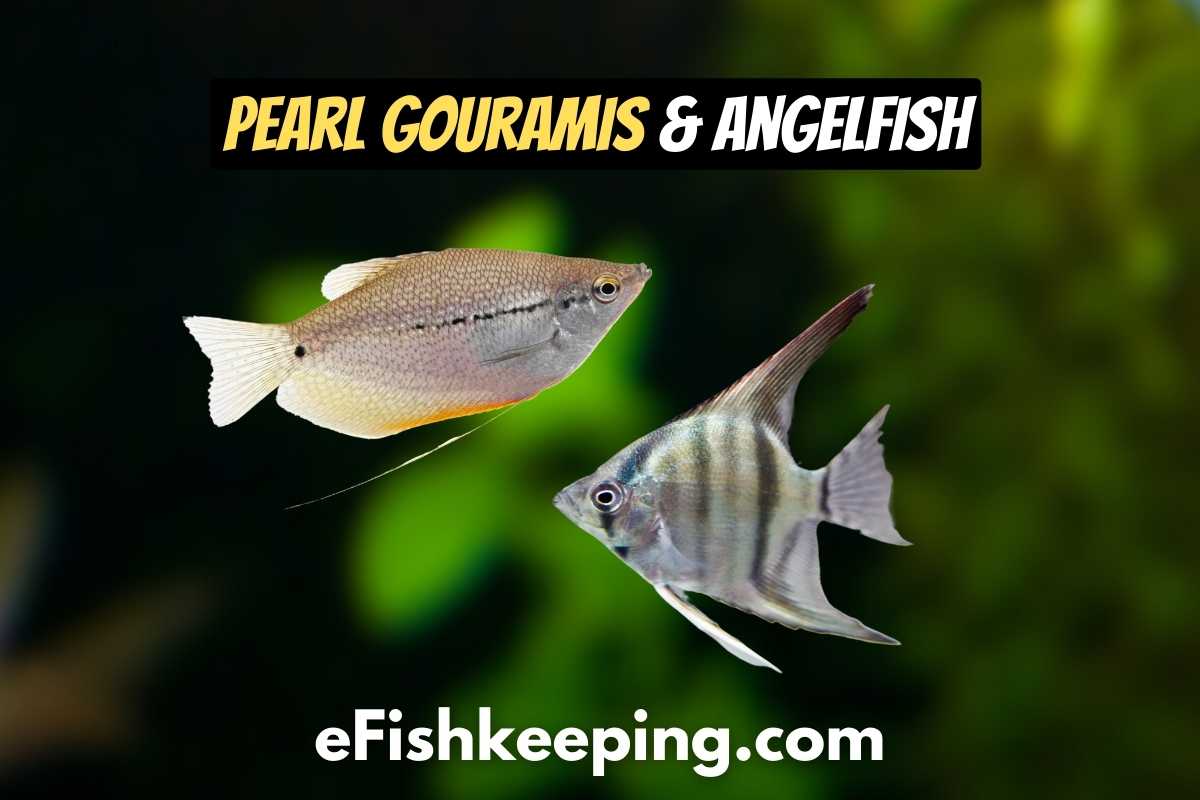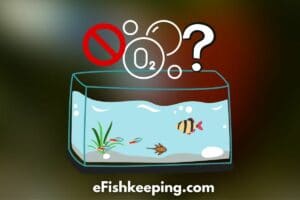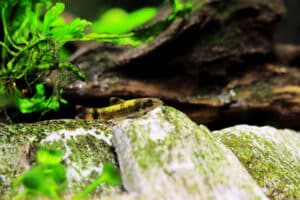Angelfish are beautiful in a freshwater aquarium. But, they tend to be aggressive, and it’s difficult to find the right fish to house them with. Very few species can tolerate living with them, and Angelfish can tolerate even less than that. But, Gouramis are one type that may or may not work, depending on the variety.
So, can Angelfish and Pearl Gouramis live together? Yes, they can! In many instances, they share a lot of the same preferences. But, there will be a delicate balance in things like ensuring a peaceful tank by giving each enough room and food. Pearl Gouramis tend to be peaceful and like to hide, so it’s not likely they’ll get in the way of the Angelfish.
Regardless, you should study up on both breeds to have all the facts about what you can expect and the potential issues with keeping them together. The following guide will take you through some of this, but it’s important to do independent research on your own.
Can Pearl Gouramis; Angelfish Live Together?
It is possible to house both Pearl Gouramis and Angelfish together. But, it’s important that you understand everything about both breeds before you do. This way, you’ll be able to provide the best conditions for both without creating any problems.
What Are the Native Habitat Requirements for Angelfish; Pearl Gouramis?
The biggest problem with making Angelfish tank mates with Pearl Gouramis is the fact that they come from separate yet similar ecosystems. Each species adapted to survive in their native locations. So, your first concern in putting them together should be meeting the needs of both.
You must mimic these habitats as best as you can.
Think about things like pH balance, water hardness, temperature, water flow, and other similar requirements.
This will ensure the fish’s happiness and reduce the likelihood of territorial battles, especially when it comes to males.
Angelfish

Native to South America, Angelfish populate the Amazon River and its creeks, brooks, and other minor waterways.
They love streams and swamps with slow-moving water that has a temperature between 75°F and 82°F. The water is soft and slightly acidic, between 6.8 and 7, with plenty of vegetation for hiding.
They also like clearer water so they can access at least eight to 12 hours of light each day. Angelfish tend to be diggers, so a soft substrate like mud or fine sand is best.
These are active fish, so they require plenty of room to swim around in. Therefore, a 30-gallon tank will be necessary, especially if you want to keep a pair.
Pearl Gouramis

Pearl Gouramis come from the opposite end of the world: Asia. But, they do love slow-moving clear, freshwater streams, lakes, rivers, and swamps that are warm.
So, maintain a temperature range of 72°F to 82°F.
They like soft, acidic water. However, ones bred in captivity can handle a much wider pH balance range, 6.0 to 8.0, with a water hardness of 5 to 15 dKH.
Pearl Gouramis spend most of their time closer to the surface of the water and hiding among plenty of shaded plants and vegetation. Greenery also provides a little snack for them.
Because of their usual habitat, the substrate is soft and pliable such as fine-grain gravel, mud, or superfine sand.
But, they also love things like caves, nooks, and other crannies to hide in. Since Pearl Gouramis are little tank travelers, it’s best to have a 30-gallon aquarium. This will be more important when you want to have a small school.
What Kinds of Diets Do Angelfish; Pearl Gouramis Require?
After tank conditions and mimicking native habitats, your next item of concern will be for the diet of both Pearl Gouramis and Angelfish. This means you want to observe the best feedin
g practices to ensure they remain healthy and vibrant for as long as possible.
Angelfish
Enjoying a wide variety of vegetation and live prey, Angelfish are omnivores. But they like to consume more protein than veggies.
So, their diet should focus around high amounts of protein and fiber. You want to provide live offerings like tubifex worms, bugs, live water fleas, larvae, smaller fish, brine shrimp, and rotifers.
Feed Angelfish fiber in the way of high-protein flakes and pellets along with blanched vegetables like zucchini and spinach.
Normally, you can feed them only once a day. But for faster growth you can even go with 2-3 times/day or more in small portions. Learn more about how often to feed angelfish in this guide.
Pearl Gouramis
Pearl Gouramis are also omnivores, and they aren’t picky about what they eat in the slightest.
They love to feast on things like algae, small insects, eggs, and larvae. The aquatic plants in their environment often provide all the foliage they’ll ever need.
So, in an aquarium, they’ll eat most fish food offerings you give, such as frozen food, live prey, pellets, or flakes.
It just has to be small enough to fit into their mouths. However, live food is best for Pearl Gouramis, both vegetation and protein. They particularly take a shine to glass worms and brine shrimp.
While they will eat the plant life in their surroundings, it’s also good to give them some blanched zucchini from time to time.
Also, Pearl Gouramis should have two to three meals each day. This will prevent overloading their digestion and help control waste levels in the tank water.
How Does the Temperament of Angelfish Differ from Pearl Gouramis?
Angelfish are more aggressive than Pearl Gouramis. But Angelfish can be quite territorial as they age, and any perceived infraction immediately puts other fish in danger.
However, male Pearl Gouramis can become aggressive during mating or in a territory bid with males of their own species. Likewise, female Angelfish will turn up their aggression when they have babies to care for.
How Do the Requirements for Angelfish Compare with Gouramis?
So you can get a better picture of the discussion above, peruse the table below to see how their needs, conditions, and diet compare. This will be essential in determining how to make things appropriate for both types of fish.
| Angelfish | Pearl Gouramis | |
| Native Location | South America; Amazon River | Asia; throughout the continent |
| Temperature | 75°F to 82°F | 72°F to 82°F |
| pH Balance | 6.8 to 7 | 6.0 to 8.0 (ones bred in captivity) |
| Water Flow | Slow-moving water | Slow-moving water |
| Light | Eight to 10 hours full access | Low light, up to eight hours |
| Substrate | Sand or mud | Sand or mud |
| Decorations | Plants for resting and hiding | Plants, driftwood, stones, and other decorations |
| Diet | Omnivore | Omnivore |
| Food | tubifex worms, bugs, live water fleas, larvae, smaller fish, brine shrimp, rotifers; high-protein flakes and pellets along with blanched zucchini and spinach | algae, small insects, eggs, larvae, aquatic plants, frozen food, live prey, pellets or flakes; glass worms, brine shrimp, and blanched zucchini |
| Tank Area | Middle | Top |
| Temperament | Aggressive | Peaceful |
How Do You Make the Conditions Work for Both Pearl Gouramis; Angelfish?
To make the conditions work for both Pearl Gouramis and Angelfish, you have to compare and contrast their native habitats, diets, and temperaments.
In some ways, they will cohabit beautifully. This is especially true of the water temperature, pH balance, and tank size.
Water Temperature; Tank Size
For instance, you can keep the water at 80°F with a pH of 7.0, and you will satisfy both of their needs.
But, you will run into problems if the tank isn’t large enough. While both require 30 gallons for their own species, you may want to consider something a little larger; 55 gallons to as much as 100 gallons will be ideal.
Number of Fish
The number of fish you have of each species, along with any other varieties and plants, will also influence the variables.
The idea is to reduce aggression from the Angelfish and prevent a hunger strike by the Pearl Gouramis. But the chances of these two getting in the way of each other is minimal since Angelfish love the middle of the tank and Pearl Gouramis like the top.
A Starting Base
So, along with averaging the water temperature and pH balance, you can feed them both the same foods and use the same substrate.
Consider the following checklist as a starting point to be able to make housing adequate for both Pearl Gouramis and Angelfish:
- Water Temperature: 80°F
- Tank Size: at least 55 gallons
- Food: Flakes and pellets are good with some live food and blanched veggies
- pH Balance: 7.0
- Substrate: fine sand or mud
- Lighting: about 9 hours a day; Pearl Gouramis prefer lower light settings
- Decorations: caves, treasure chests, and plants
- Plants: Java moss, Hornwort, and Amazon Sword
Conclusion
Angelfish and Pearl Gouramis can live together quite happily under the right conditions. They enjoy many of the same water parameters and diet, so it should be good in that regard. However, it’s important you quell as much aggression and upset as possible.
Read More:
Hi! I’m Praveen Ghoshal, the founder of eFishkeeping.com. Inspired by my Dad, I got interested in fishkeeping when I was a kid. Since then, I have been involved with this hobby. Currently, I have 3 fish tanks at our home, and I enjoy this hobby with my full family. Read more about me here.



![Do Neon Tetras Die Easily? [Here’s The Truth!] do-neon-tetras-die-easily](https://efishkeeping.com/wp-content/uploads/2023/03/do-neon-tetras-die-easily-300x200.jpg)



